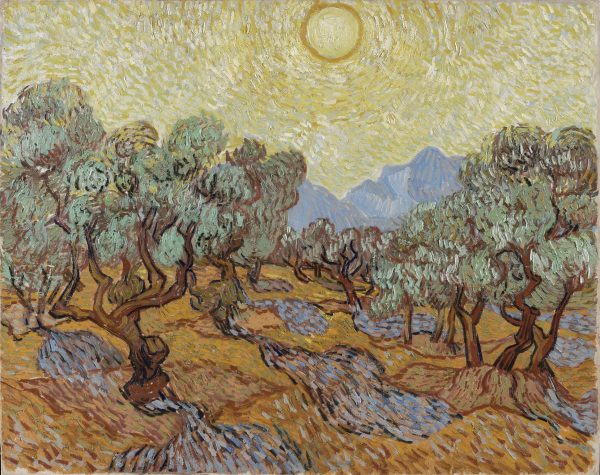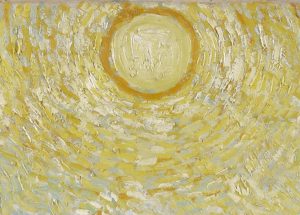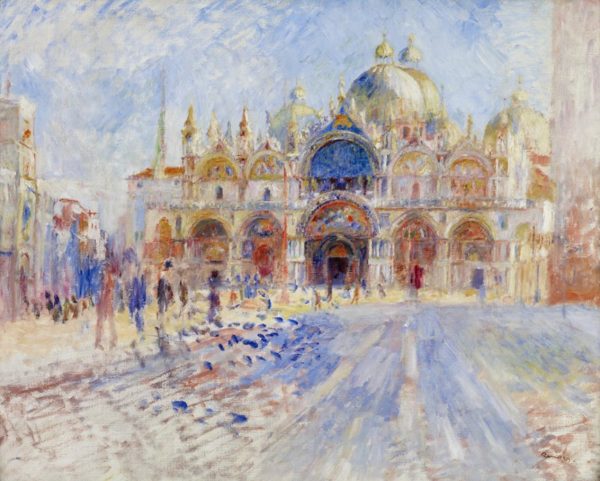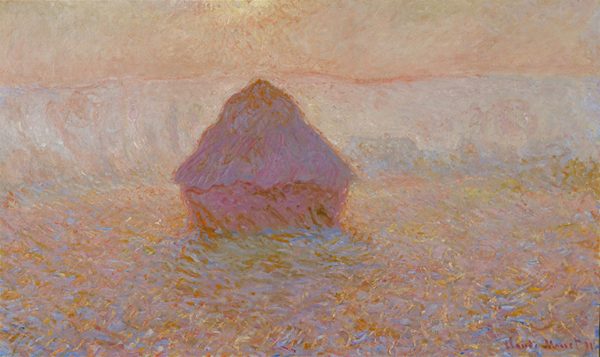Welcome to Frames & Fables, where every piece of art has a story! My name is Kaili McNutt, and I’ve always been passionate about art. I’ve grown up with it, either by going on field stops to art museums, or my dad who is an animator, teaching me about the “why” and “how” behind art.
The Minneapolis Institute of Art is home to a vast collection of masterpieces, each with its own journey, its own whispers from the past. Behind every painting, sculpture, and artifact lies a tale of inspiration, struggle, innovation, or rebellion.
Here, I dive beyond the colors and textures to uncover the narratives hidden within the walls of Mia. From the hands that crafted them to the history that shaped them, I explore the untold stories that make art more than just something to admire, it becomes something to feel, to understand and to connect with.
Sunday, May 11th- 2025: Olive Trees With Yellow Sky And Sun
Welcome to blog post number one! As we stroll through the halls of the Mia and as we enter the warmer months, I thought it would be a good idea to reveal the background of a painting which warm tones match the warmth of the air- Olive Trees With Yellow Sky And Sun, by Vincent Van Gogh, is the perfect painting to talk about today!

During his time at the Saint-Rémy asylum, Vincent van Gogh received a letter from his friend Emile Bernard, who described his new painting depicting Christ in the Garden of Olives. In his response, Van Gogh expressed a preference for painting the olive trees right outside his window rather than an imagined scene of Christ’s suffering. He believed that reality held the true source of strength, even though his own struggles often led him to reflect on the religious beliefs of his youth.

His depiction of the olive trees radiates passion, carried by an intense emotional force that flows across the entire canvas. This energy gives a rhythmic, almost undulating movement to every element, the ground, the trees, the sun, and the sky, all interconnected by the same expressive motion. In Olive Trees With Yellow Sky And Sun, the swirling brushstrokes and vibrant colors evoke a sense of movement and vitality, capturing the essence of the landscape rather than a mere representation of it.
The golden hues of the sky contrast with the silvery greens of the olive trees, creating a dynamic interplay of light and shadow. This technique, characteristic of Van Gogh’s later works, emphasizes emotion over realism, inviting viewers to experience the scene through his eyes. Interestingly, Van Gogh painted multiple versions of olive trees during his time in Saint-Rémy, each with its own unique energy and composition.
His exploration of this subject reflects his evolving artistic style and his desire to convey the profound beauty he found in the everyday world.
Friday, May 16th- 2025,The Piazza San Marco, Venice


Welcome back to Frames & Fables! Another day, another utterly spectacular painting! Today, I will be talking about the impressive piece The Piazza San Marco, Venice created by Pierre Auguste Renoir in 1881.
This painting is hands down one of my absolute favorite pieces at the Mia. Every time my dad and I go to the Mia, we spend a large chunk of our time looking at this piece because the beauty of it is just astonishing. It is quite interesting to look at because of the very prominent brush strokes that you can see. Pierre was a French artist and a founding member of the Impressionist movement.
He is known for his use of soft colorful landscapes. He developed a skill of broken brushstrokes and very bold color combinations in an attempt to capture light and movement, which was very well executed. An unknown fact is that he suffered from debilitating rheumatoid arthritis. This did not in any way affect his ability to maintain an absolutely incredible level of precision and efficiency with his artwork. In this piece, Renoir uses a pallet of extremely bright blues, soft and warm whites, warm terracotta and deep browns to reflect on the unique light of Venice.
The structure that you see is the Basilica di San Marco, which dominates the piece and presents Renoir’s extremely impressive brushwork, and attention to detail. The basilica was an important structure to include in this painting of Venice bevause it was the main cathedral and was also very luxurious. It has a prominent and unique design, along with countless mosaics.
The painting shows the true environment of the time and place, inviting the viewers of the painting to experience the scene as if they were really in it. Renoir’s approach allows the viewers to feel immersed in the painting.
Friday, May 23rd – 2025: Grainstack, Sun in the Mist Gallery


Good to see you again! Welcome back to Frames & Fables, blog post number three. Today- we have another stunning piece, which includes all of the colors of the summer! Drumroll please…Grainstack, Sun in the Mist Gallery by Claude Monet, a lovely oil on canvas painting! This one is most definitely a fan favorite at the Minneapolis Institute of Art, so let’s learn about the story behind it! In the late 1880s, Monet analyzed visual perception by representing the same subject under many conditions of lights, atmosphere, as well as weather. In one series, he painted the grainstacks near his home in Giverny, which is located in the region of Normandy in northern France. While he was painting this, he worked directly outside in order to capture the effects of light, this method is called “en plein air”. He often had multiple canvases that were set up at once, which allowed him to quickly capture the different moments of light and weather. The large structures protected the grain from rain and rodents. In France, the typical farming practice and the stacks came to symbolize the country’s rural success. A little fun fact- Monet studies the grainstacks during different seasons as the sunlight changes in intensity. In this piece, it shows the autumn dawn, at a moment when the sun shines through the mist. The large grainstack is contrasted against the morning light which forms a gorgeous halo around it. When seen up close, the viewers can see patchwork of brushstrokes, and each individual one is seen as a “notation” of light. When seen from a distance, the colors work together to form a jaw dropping, shimmering painting!
This blog post concludes our time together, learning about the process and history behind these wonderful works of art. I hope that when you see art now, you’ve been inspired to go beyond just the visual aspects, and to dig into the “why” behind art.
Best wishes,
Kaili McNutt







